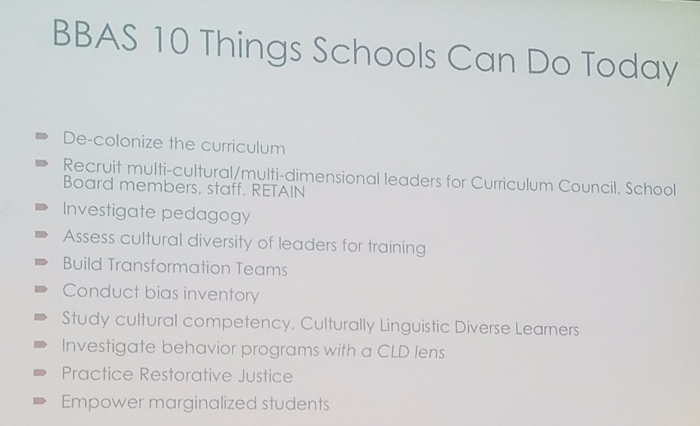I recently attended a lecture by Kelly Wickham Hurst about systemic racism in America’s School system. The following is a combination of my notes from her lecture as well as a few resources that really helped paint a comprehensive picture for me of the current state of schooling in America.
- When the Supreme Court decided on the case of Brown vs Board of Education mandating that schools be desegregated, wonderful black schools were closed and over 30,000 competent, qualified black teachers and administrators were fired. Partially as a direct consequence of this action, here is what students and teachers in American public schools currently look like, according to APM reports:

- Malcom Gladwell has a great podcast called Revisionist History, and last season it included an incredible episode about the negative impacts of Brown vs. Board of Education:
The Brown v Board of Education might be the most well-known Supreme Court decision, a major victory in the fight for civil rights. But in Topeka, the city where the case began, the ruling has left a bittersweet legacy. RH hears from the Browns, the family behind the story.
http://revisionisthistory.com/episodes/13-miss-buchanans-period-of-adjustment
- Adam Ruins Everything made this 6 minute video that explains and summarizes the impact of red-lining in creating segregated suburban communities:
- Nikole Hannah-Jones is a force. She was recently named a MacArthur Genius Fellow for 2017, partially as a result of this series of podcasts:
Right now, all sorts of people are trying to rethink and reinvent education, to get poor minority kids performing as well as white kids. But there’s one thing nobody tries anymore, despite lots of evidence that it works: desegregation. Nikole Hannah-Jones looks at a district that, not long ago, accidentally launched a desegregation program.
https://www.thisamericanlife.org/radio-archives/episode/562/the-problem-we-all-live-with
- The second episode in this series looks at Hartford, CT school district’s efforts to integrate and includes and an interview with then Secretary of Education Arnie Duncan:
Last week we looked at a school district integrating by accident. This week: a city going all out to integrate its schools. Plus, a girl who comes up with her own one-woman integration plan.
https://www.thisamericanlife.org/radio-archives/episode/563/the-problem-we-all-live-with-part-two
- Be aware of your own biases. We all have biases, but increasing our awareness of them can help up to make conscious adjustments to ensure that our prejudices have minimal impact on our decisions. Try taking Harvard’s implicit-association tests.
Where do we go from here? Below are the ideas presented by Kelly Wickham Hurst at her talk as well as a link to a article she wrote in 2016 on the topic.
Being Black at School: 10 Things Schools Can Do Today for Black Students

My biggest takeaway from Hurst’s talk was to stop getting stuck analyzing data and start acting and having hard conversations. This requires you to critically consider who is served when implementing school and local polices with which you may have been participating and complying in for your whole life.
When you see something in schools that marginalizes a population, or a well intentioned policy that you recognize as being harmful to students, do something. Don’t just passively comply. Speak up. Change the rules. Run up the flagpole and take that shit down.